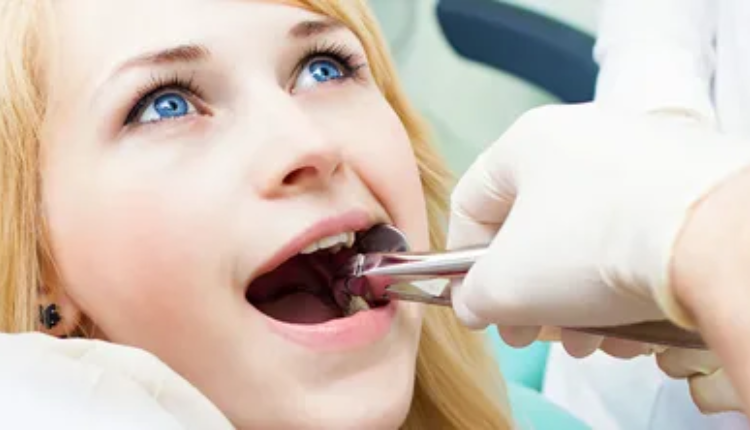A painful condition known as dry socket, or alveolar osteitis, can develop following a tooth extraction, including the excision of wisdom teeth. This occurs when a blood clot that forms in the tooth socket dissolves or becomes dislodged before the lesion heals completely. This exposes the bone and nerves to food, drink, and air, which can cause excruciating pain and other problems. Avoiding dry sockets is essential for a seamless recuperation. Here are some tips to reduce your risk:
1. Follow Post-Operative Instructions Carefully
Immediate Care: Your dentist or oral surgeon will provide specific instructions for post-operative care. Follow these instructions meticulously, including how to manage pain, what to eat, and how to care for the extraction site.
Medication Use: Take prescribed medications as directed. This may include pain relievers and antibiotics. Using these medications as instructed helps manage pain and reduces the risk of infection, which can contribute to dry sockets.
2. Avoid Dislodging the Blood Clot
Gentle Brushing:For the first few days after the extraction, refrain from brushing the area directly, even if keeping good oral hygiene is crucial. Instead, gently brush the area with a soft toothbrush.
Rinsing: Avoid vigorous rinsing or spitting, which can dislodge the blood clot. Use a gentle mouth rinse recommended by your dentist, often starting 24 hours after the extraction, to help keep the area clean without disturbing the clot.
3. Avoid Smoking and Tobacco Products
Impact of Smoking: Smoking or using other tobacco products significantly increases the risk of dry sockets. The chemicals and suction can interfere with healing and dislodge the blood clot.
Quitting Tips: If possible, avoid smoking for at least a week before and after the extraction. If you’re a smoker, talk to your dentist about strategies to help you quit or minimize smoking around the time of the procedure.
4. Maintain Proper Oral Hygiene
Mouthwash Use: Use a dentist-approved antimicrobial mouthwash to keep the area clean without affecting the blood clot. Rinse gently to avoid dislodging the clot.
Regular Brushing: Take particular care when brushing, staying away from the extraction site. Maintaining oral hygiene aids in healing and reduces infection.
5. Follow Dietary Restrictions
Soft Foods: For the first few days after the extraction, stick to a diet of soft foods. Yogurt, applesauce, and mashed potatoes are good choices. Avoid hard, crunchy, or sticky foods that disturb the clot or cause discomfort.
Avoid Hot Foods and Drinks: Hot foods and beverages can increase blood flow to the area and potentially dislodge the clot. Opt for cooler or room-temperature items during the initial recovery period.
6. Be Careful with Physical Activity
Avoid Strenuous Activities: For a few days after the extraction, refrain from vigorous physical activities or heavy lifting. Increased blood pressure and physical exertion can affect the healing process and increase the risk of dry sockets.
Rest and Recovery: Allow yourself adequate rest and avoid activities that could disrupt the extraction site's healing. This will help ensure a smoother recovery and reduce the likelihood of complications.
7. Use Ice Packs
Swelling Management: Apply ice packs to your face near the extraction site to help reduce swelling and manage discomfort. This can also help minimize the risk of complications by promoting better overall healing.
Application Tips: Apply ice packs in 15-minute intervals, allowing your skin to rest between applications. To avoid frostbite, avoid putting ice directly on your skin.
8. Monitor for Symptoms
Recognize Signs: Be aware of symptoms that could indicate a dry socket, such as severe pain that starts a few days after the extraction, a bad taste in your mouth, or visible bone in the socket.
Seek Help: If you suspect you have developed a dry socket or experience severe pain not relieved by over-the-counter pain medications, contact your dentist or oral surgeon promptly. Early intervention can assist to manage the condition effectively.
9. Schedule Follow-Up Appointments
Check-Up Visits: Attend all follow-up appointments with your dentist or oral surgeon. These visits allow your provider to monitor the healing process, ensure no complications, and provide additional care if needed. Are you struggling with wisdom teeth? Omkarananda Dental offers the best and most promising solutions for your teeth. Their expert wisdom tooth removal in Bistupur helps you achieve pain-free dental procedures and regain a confident smile.
Healing Assessment: During these appointments, your dentist will assess the extraction site and make any necessary recommendations for further care or adjustments to your recovery plan.
Conclusion
Preventing dry sockets after wisdom teeth removal involves careful attention to post-operative care and following your dentist's instructions. You can significantly reduce your risk of developing this painful condition by avoiding actions that could dislodge the blood clot, maintaining proper oral hygiene, and making mindful choices about diet and activity. If you experience unusual symptoms or have concerns during your recovery, don’t hesitate to contact your dental care provider for guidance and support. Proper care and proactive measures can lead to a smoother healing process and a more comfortable recovery.





Comments